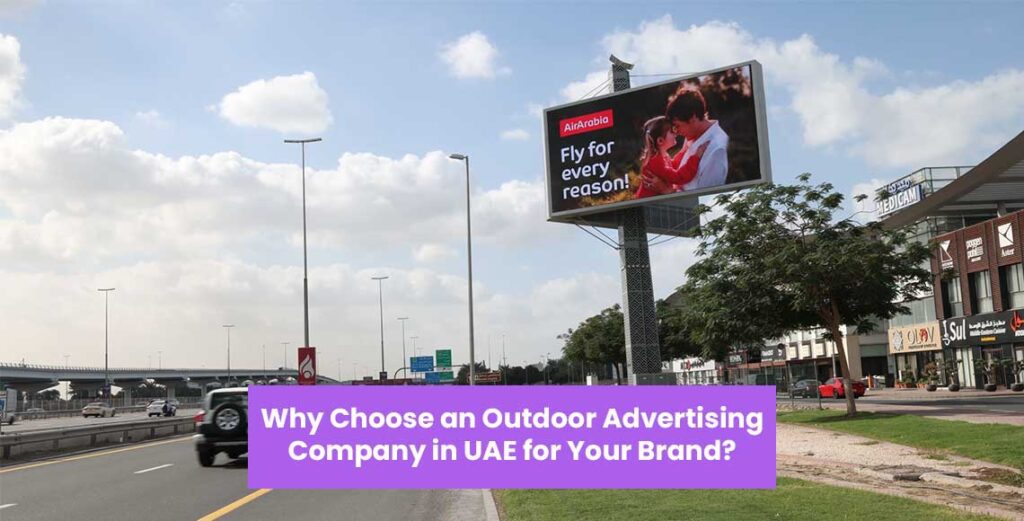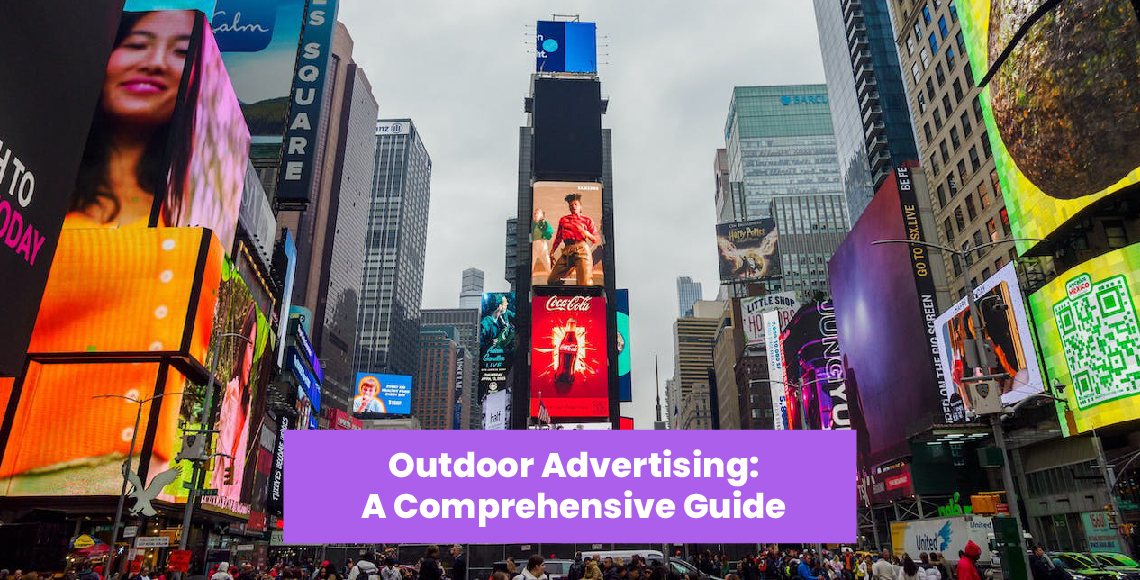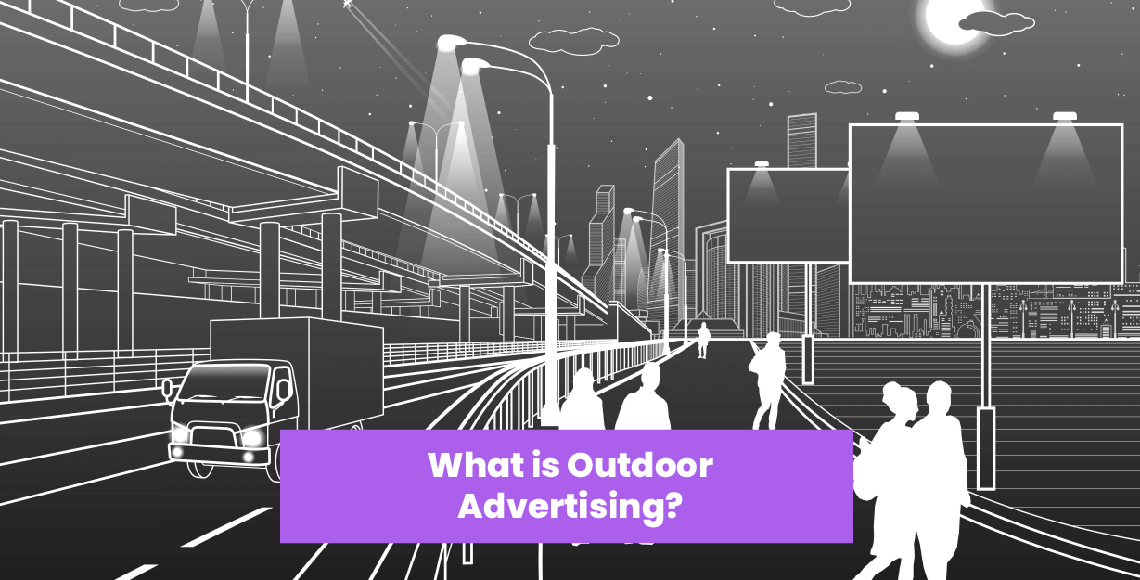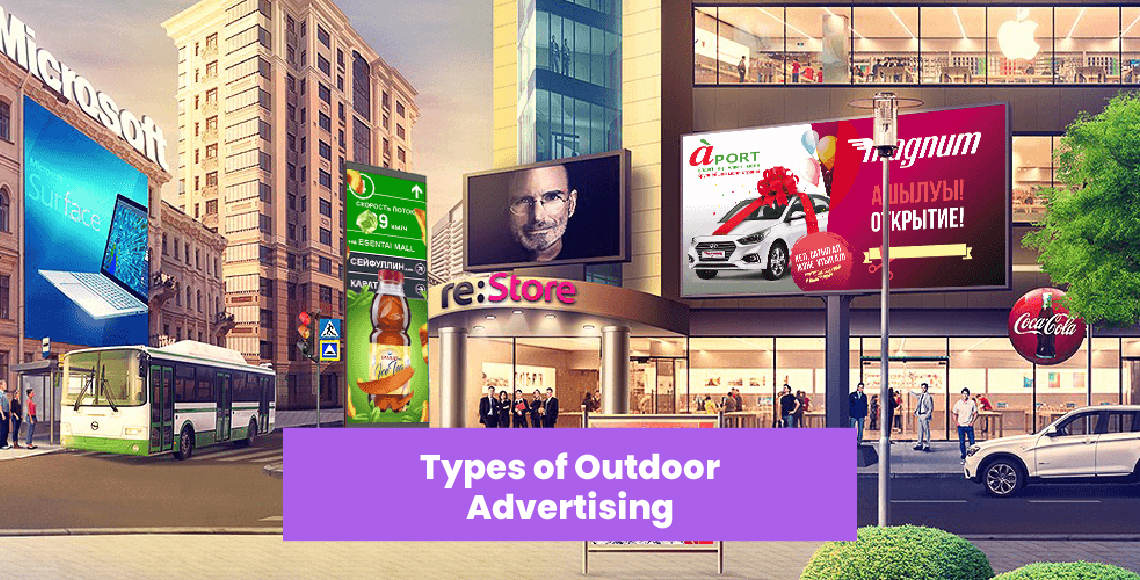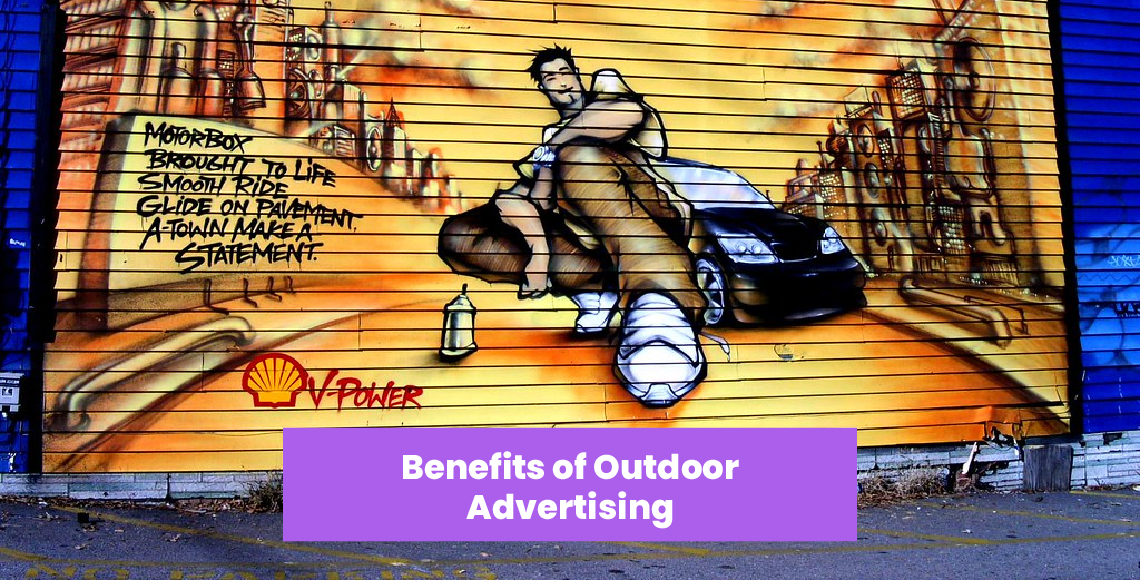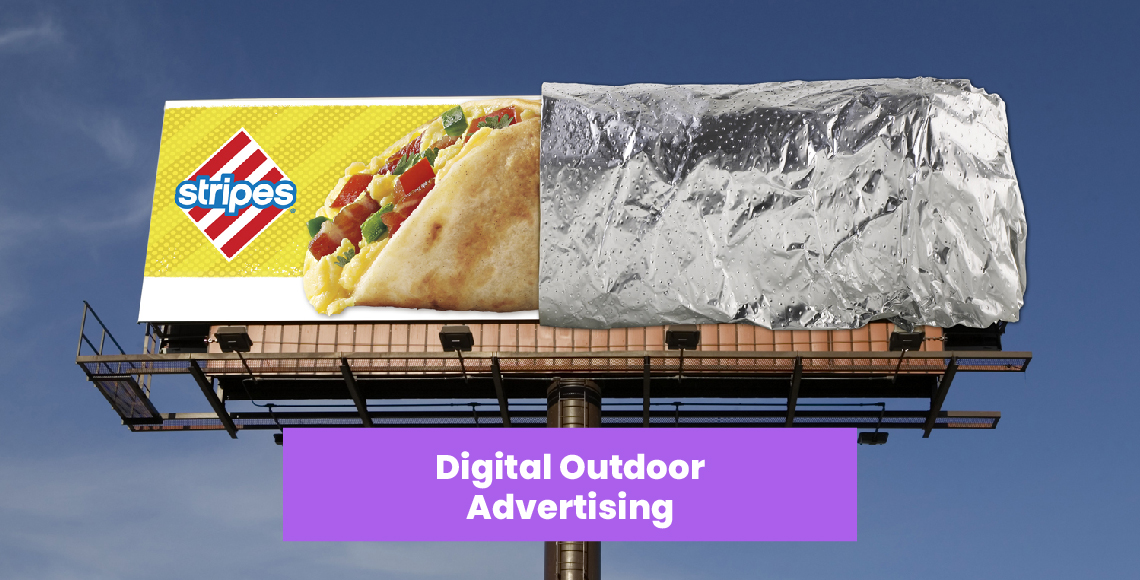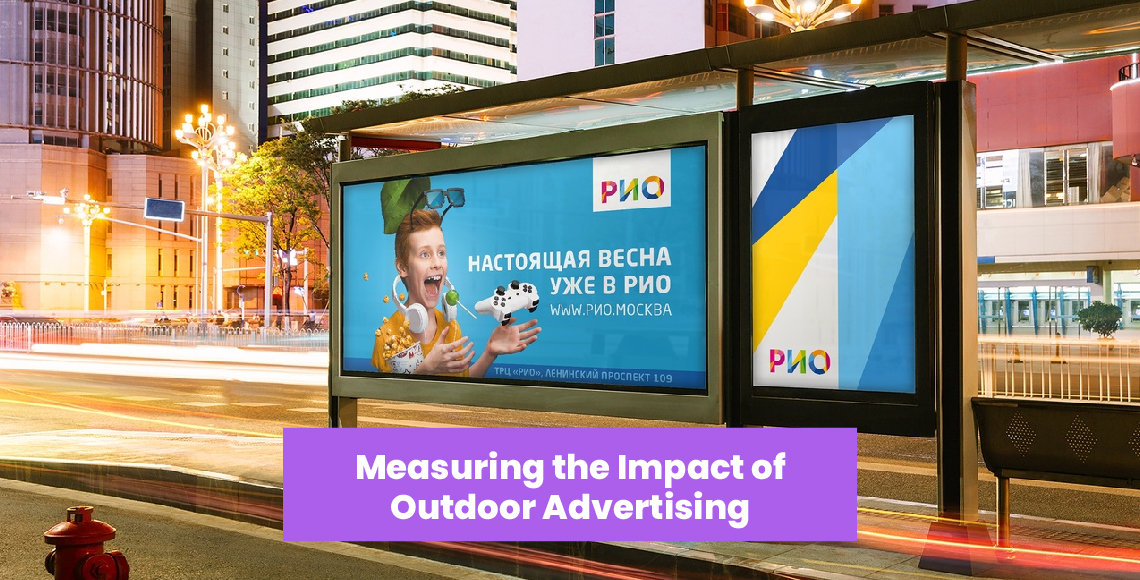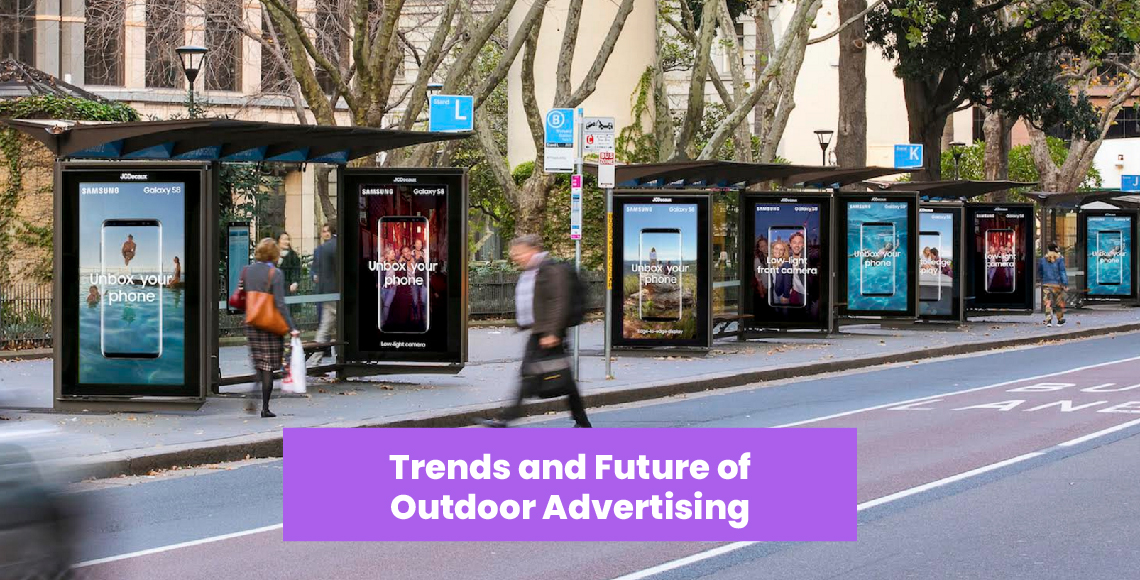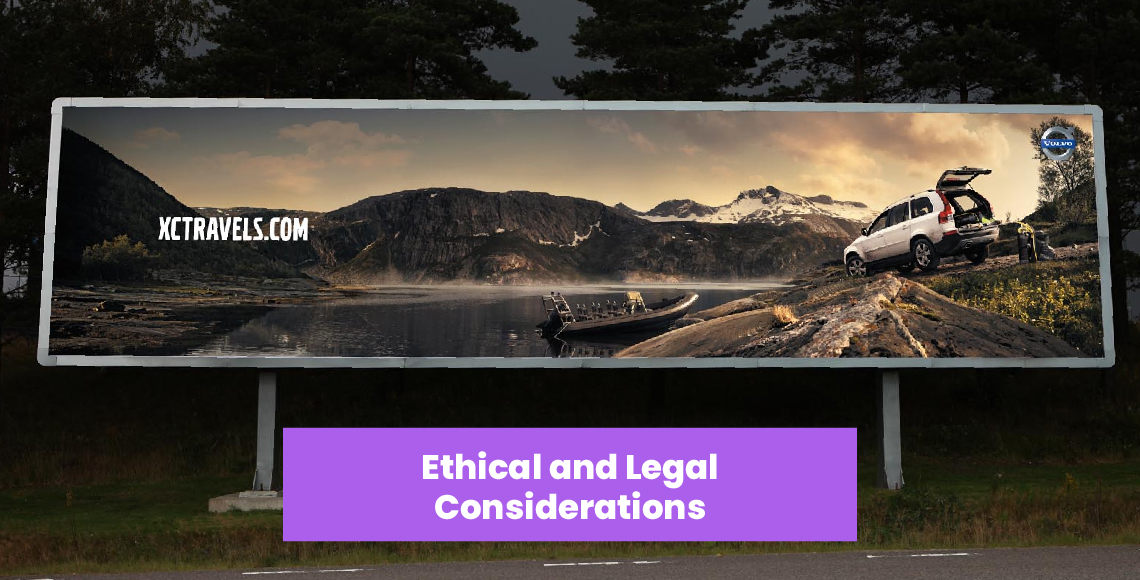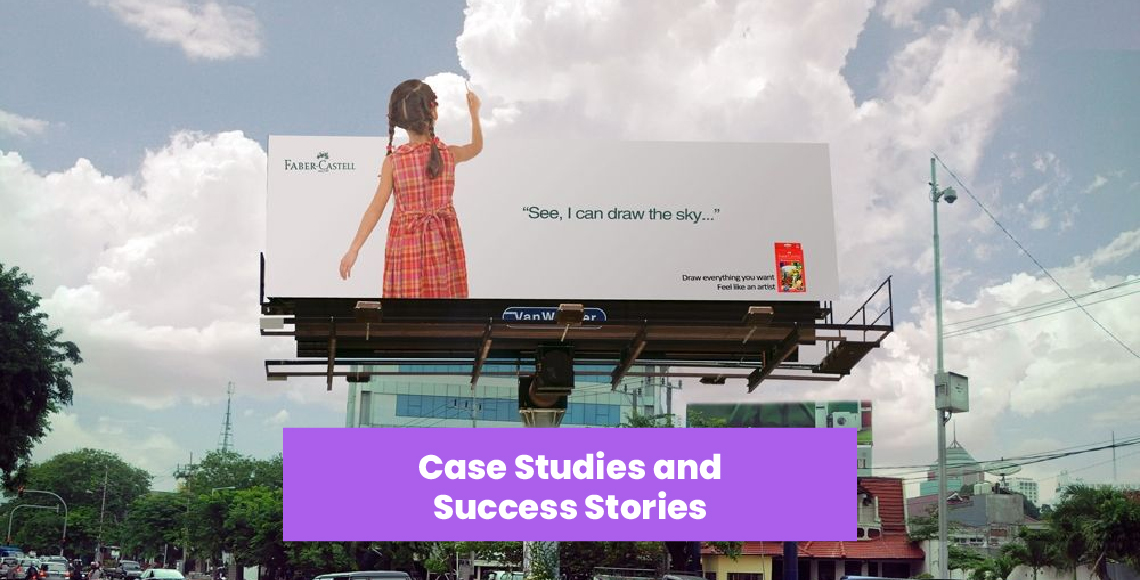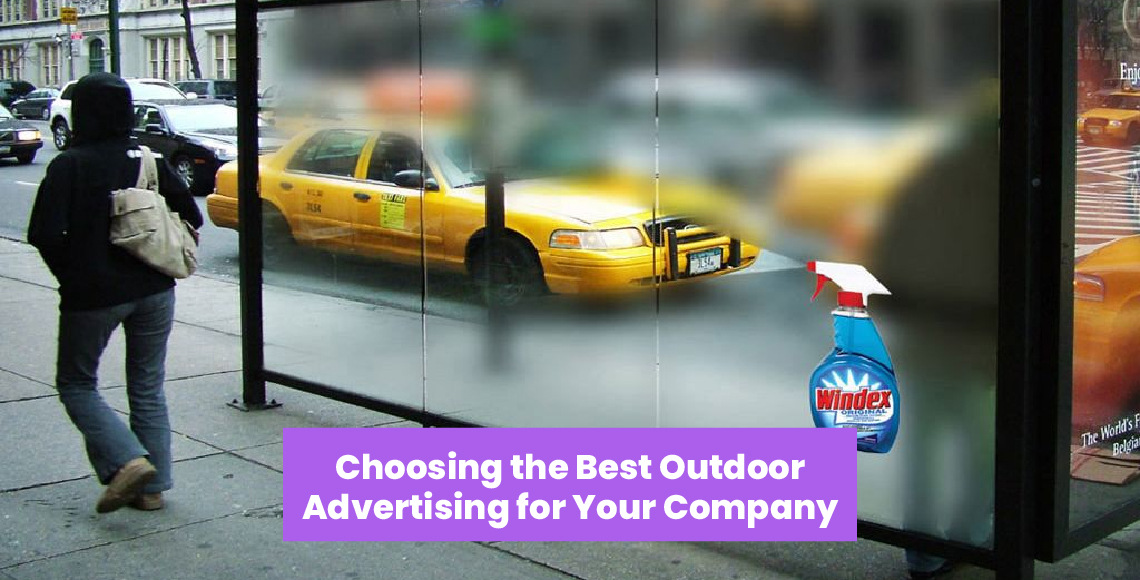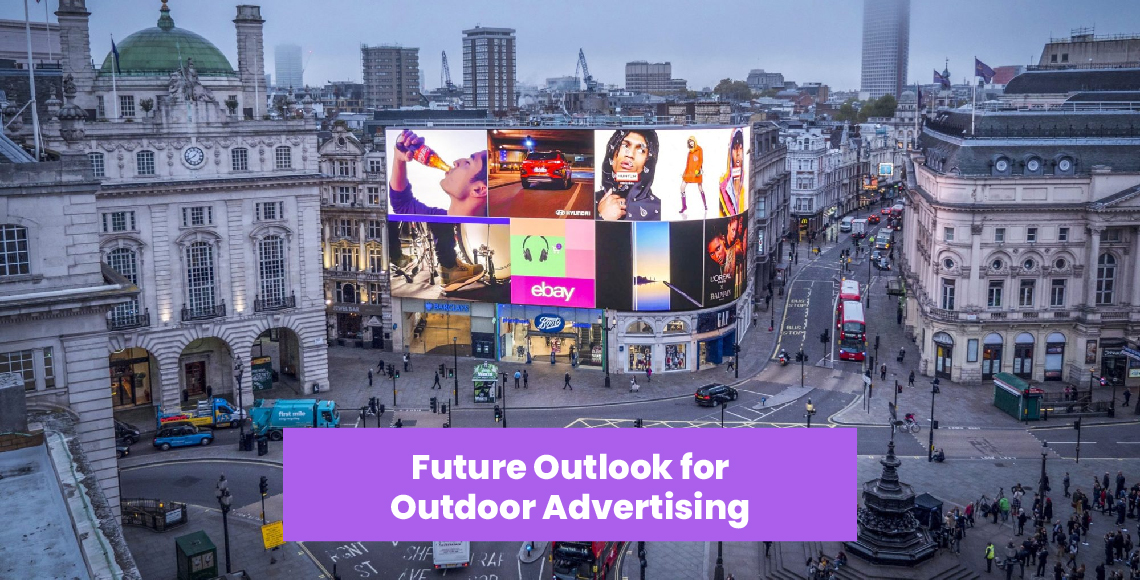Outdoor advertising remains one of the most effective ways to capture attention and promote a brand. This Outdoor Advertising Guide explores the different types of outdoor ads, including billboards, transit ads, and digital signage, helping businesses maximize their visibility. Whether you’re a small business or a large corporation, outdoor advertising offers high exposure, cost-effective solutions, and powerful brand awareness. Learn how to leverage outdoor ads to engage your target audience effectively.
What is Outdoor Advertising?
Outdoor advertising, also known as out-of-home (OOH) advertising, refers to any advertising that reaches consumers when they are outside their homes.
This type of advertising encompasses a wide range of formats like a billboard, prominently displayed in public spaces, transit areas, and along highways.
The key advantage of outdoor advertising is its ability to make a large-scale visual impact on a diverse audience, often in high-traffic locations.
This medium is particularly essential for brand building and promoting products or services to a broad demographic.
Outdoor Advertising Importance in Marketing
Outdoor advertising is an important required part of the marketing mix since it provides unrivaled exposure and frequency at a reasonable cost. It allows you to target certain demographics and reinforce messages from other forms of media.
Studies show it can positively influence business awareness, attitudes, and purchases.
Overall, outdoor advertising generates significant products branding impact by being viewed by consumers in the public sphere.
Read also: What is Outdoor Advertising?
Types of Outdoor Advertising
Common examples include billboards, bus stop posters, transit advertising on buses and trains, and digital billboard.
Billboards: Traditional and Digital
Billboards are highly visible displays located along transportation routes. Traditional printed billboards remain popular. Digital billboards feature rotating billboard signs on LED screens and allow more flexibility.
The placement of significant billboards throughout travel routes or a popular highway helps business reach clients.
Transit Advertising: Buses, Subways, and Taxis
Transit ad appears on the inside and outside of highway and public transportation like buses, trains, taxis and more.
This dynamic medium allows outdoor advertisers to be seen by brand customers on the move in urban areas. Growing transit ridership provides a captive audience. Outdoor ad signs and billboard advertising types are also being integrated into transit advertising.
Street Furniture: Benches, Kiosks, and Bus Shelters
Street furniture like bus shelters, benches, and kiosks provide opportunities to advertise to pedestrians in an informal context.
Their presence on sidewalks places marketers in direct contact with consumers. Street furniture ads tend to feel less intrusive than other outdoor advertising or billboard signs.
Point of Sale Displays
Digital marketing and product information are featured on point of sale (POS) displays. Advertisers may create a last impression at the point of sale.
Common POS materials include display racks, stickers, banners and more. POS advertising helps link the outdoors and in-store experiences.
Mobile Billboards and Vehicle Wraps
Turning vehicles into advertisements, mobile billboards put company products or services on cars, trucks, buses, taxis and more. Full vehicle wraps completely cover the vehicle exterior with messaging.
Removable magnets and internal displays are less expensive alternatives. This creative outdoor advertising or billboard generates a high volume of exposures for every dollar invested.
Ambient Advertising
Ambient advertising uses unexpected spaces as it reaches people in daily routines, like placing outdoor billboard signs like billboards on sidewalks, park benches, restaurant trays, and more.
Often quirky and interactive, ambient outdoor advertising like billboard signs grab attention. This out-of-the-box strategy has the ability to link the businesses with audiences in unique ways.
No matter what type of outdoor advertising you choose, it’s important to make sure that your message is clear, concise, and memorable. You also need to consider your target audience and where they are most likely to see your ad. With careful planning and execution, outdoor advertising can be a powerful tool for reaching new customers and growing your business.
Read also: 10 Popular Types of Outdoor Advertising You Should Know About
Benefits of Outdoor Advertising
One of the benefits of out of home advertising such as a billboard is its continuous visibility, providing repeated exposure to passengers and passers-by, thus enhancing brand recognition and recall across the highway or some outdoor location.
High Visibility and Reach
Outdoor advertising’s presence in a highway or public places means it cannot be turned off or avoided like other billboards. This outdoor presence gives it unparalleled visibility.
Large media formats like outdoor billboards also offer incredible reach. Outdoor advertising is very effective, it can realistically achieve hundreds of impressions per day in high-traffic areas like highways.
Cost-Effectiveness
Compared to other major media like print, TV, and online, outdoor advertising provides an efficient cost per thousand (CPM) impressions. Mobile billboards, for example, offer high frequency to compensate for reduced impressions.
Overall, outdoor advertising effective tools deliver significant consumer reach at an affordable price point for any business.
Targeting Capabilities
Outdoor advertising facilitates geographic, demographic, and behavioral targeting. Localization is possible by strategic placement near target audiences including a highway or a transit.
Modern outdoor advertising enables more advanced audience segmentation and timely messaging based on effective and successful factors like weather or time of day.
Impact on Businesses Awareness
Research shows outdoor advertising has powerful subconscious effects on memory and attitudes. The market consumers who have seen outdoor commercials have better visual memory and build relationships.
The broad exposure of outdoor banners or billboards makes them highly effective for building company awareness.
Read also: 5 Benefits for Integrating Digital and Outdoor Advertising
Designing Effective Outdoor Advertisements
Designing effective outdoor advertisements requires a focus on simplicity and clarity. The message should be concise and easily understandable, often within a few seconds, as the audience is typically on the move.
Bold, eye-catching visuals and legible, large fonts are key, as they help in quickly grabbing attention.
A successful outdoor ad merges creativity with strategic placement to maximize visibility and recall.
Key Principles: Simplicity, Readability, and Visual Appeal
Great outdoor ad design comes down to three key principles: simplicity, readability, and visual appeal. Billboards have to convey rapidly since they have limited time to create an impression.
Highly legible text and bold visuals are essential in modern billboards. Creativity and striking visuals activate highway consumer attention.
Use of Color and Graphics
Outdoor advertising relies on vibrant colors and attractive imagery. Bright colors stand clearly against natural backgrounds.
Photographic images help quickly convey messages even on the highway. Logos are key for branding, and icons can shorthand complex ideas to the business targeted market.
Typographic creativity makes outdoor modern billboards more compelling and memorable.
Creating a Memorable Message
Outdoor billboard must distill the business or company messaging into a bold headline combining it with creative flair. Rhyming, alliteration, and wordplay make messages stickier.
Evoking emotion creates stronger memories. A concise, clever tagline can pique interest and drive the campaign theme home.
Incorporating Technology and Interactivity
Outdoor billboards open exciting possibilities like animated or video content, interactivity through mobile devices integration, and live social media feeds.
Technologies like QR codes and augmented reality allow consumer engagement.
Outdoor advertising can also respond to environmental factors like time of day or weather thanks to real-time data.
Read also: 6 Models for Outdoor Advertising Evolution
Digital Outdoor Advertising
Digital outdoor advertising modernizes traditional outdoor media through dynamic, electronic displays.
These versatile platforms offer real-time content updates, interactive features, and vibrant visuals, greatly enhancing audience engagement and ad customization possibilities.
Digital Billboards and Screens
Billboards outdoors feature rotating billboards displayed on LED screens rather than static printed posts. This allows multiple outdoor advertising billboards to run in the same space and provides flexibility to display contextually relevant ads.
Modern screens are also appearing in transit stations, bus stops, highway and other formats.
Programmatic Outdoor Advertising
In programmatic ad purchasing, data and algorithms are leveraged to purchase outdoor advertising assets and generate dynamic creative.
This allows advertisers to programmatically target audiences and tailor messaging based on variables like weather or real-time traffic. Programmatic outdoor advertising maximizes flexibility and efficiency.
Interactive and Real-Time Content
Digital outdoor advertising enables interactive experiences through QR codes, augmented reality, live social media feeds, and integrated mobile control of advertising solutions.
Real-time data can make ads location- and time-specific. For example, ads can adjust based on nearby events or the weather at a given bus stop.
Measuring the Impact of Outdoor Advertising
It involves analyzing metrics such as reach, frequency, and audience engagement. Techniques like geolocation data, surveys, and digital interaction tracking provide insights into the effectiveness and ROI of outdoor ad campaigns.
1. Traditional Metrics: Visibility and Frequency
Key metrics for assessing outdoor advertising refers to exposure and frequency. Exposure quantifies the percentage of a target audience exposed to the ad. Frequency measures average exposures among market. High combined exposure and frequency indicates strong advertising impact.
2. Advanced Techniques: Geofencing, Mobile Data, and AI Analysis
Emerging approaches like geofencing, mobile data collecting, and artificial intelligence (AI) improve outdoor advertising measurement. Device exposure to digital advertising is tracked via geofencing.
Mobile data shows real-world actions correlated to a billboard poster exposure. AI evaluates millions of data points to optimize media plans.
3. ROI Assessment
Linking business outcomes to OOH exposure helps quantify return on investment (ROI). Tactics like promotional codes on ads tied to sales data help connect ads to purchases.
Surveys may also assess ad influence on purchase intent and company perception.
Read also: Analyzing Competitors’ Outdoor Advertising Strategies
Trends and Future of Outdoor Advertising
The future of outdoor advertising is shaped by trends like digital integration, data-driven targeting, and interactive technologies, enhancing personalization and engagement.
Augmented reality and eco-friendly practices are also emerging as key components, aligning with technological advancements and sustainability concerns.
– Integration with Digital Marketing Strategies
The further combination of outdoor advertising with projects is a crucial trend. Coordination across online, mobile, and outdoor advertising drives impact.
It allows tighter targeting and message coordination. Analytics and programmatic optimization increase media synergy.
– Applications for AR and VR
Emerging AR and VR technologies create immersive brand experiences from the outdoor advertising. AR overlays modern content onto real environments.
VR lets consumers engage with the largest 3D virtual market. These technologies drive consumer interaction and amplify branding from OOH.
– Sustainability in Outdoor Advertising
Sustainability is an increasing priority in outdoor advertising. Energy conservation, the use of recycled resources, and waste avoidance all exhibit environmental stewardship.
Brands with authentic commitment to sustainability can effectively promote eco-friendly practices through OOH.
Ethical and Legal Considerations
Ethical and legal considerations in various contexts necessitate adherence to regulations and ethical standards, ensuring respect for privacy, truthfulness, and cultural sensitivity. It’s crucial to balance commercial interests with social responsibility and legal compliance.
Regulatory Landscape
Outdoor advertising is subject to regulations on factors like size, placement, light pollution, and content. Regulations vary by municipality.
Many cities now charge licensing fees. Companies must ensure compliance across jurisdictions.
Ethical Advertising Practices
Ethical outdoor advertising reflects social responsibility and avoids harmful tropes. Brands have to evaluate the conveyed stereotypes and portrayal.
Causing visual clutter or disrupting spaces like parks raises concerns. Truthful messaging and community-conscious creativity is key.
Community and Environmental Impact
Negative community impact and light pollution are ethical considerations with 24/7 outdoor advertising. Advertisers must be mindful of over-commercialization. Responsible placement and reduction of an illuminated billboard can limit disruption. Funding civic initiatives demonstrates community business investment.
Case Studies and Success Stories
Case studies and success stories illuminate the real-world impact and strategies behind successful initiatives, offering valuable insights into effective practices and lessons learned.
Innovative Campaigns
– Charmin’s Times Square Restrooms
Used outdoor advertising to drive brand awareness and highlight a new product feature (odor control).
– MTV’s street furniture advertising
Placed vertical strips on waste bins that combined to display images of performers. This low-cost ambient advertising campaign generated buzz.
Impactful Brand Messages
– Apple’s classic
“Think Different” billboard campaign spotlighted innovators and aligned with brand values.
– Guinness’s “Sapeurs”
The poster campaign celebrated Congo’s high-society subcultures and resonated with African markets.
Return on Investment Examples
– Pepsi’s mobile billboard
The campaign increased sales 49% in target markets by blanketing areas around retailers.
– L’Oréal
Boosted consideration by 15% with outdoor advertising during the Cannes Film Festival strategically targeting their affluent demographics.
Choosing the Best Outdoor Advertising for Your Company
It includes important points:
Budget Considerations
Evaluate production and media costs across outdoor advertising formats. Compare impression delivery and optimize CPM. Prioritize high-impact placements near customers. Constrain costs with limited flight dates if needed.
Audience Targeting
Analyze demographics like age, income, and lifestyle in potential outdoor zones. Identify high-value consumer groups. Audit media consumption habits. Match outdoor formats to target routines and behaviors.
Location Analysis
Map customer and prospect locations and behaviors. Assess mobility patterns. Identify key routes and exposure opportunities. Scout placement visibility and angles. Evaluate spacing from competitors.
Integration with Overall Marketing Strategy
Tie outdoor advertising to broader campaigns and other media activity. Coordinate messages and timing with digital, print, TV.
Amplify reach through synergy, weigh contribution to goals like awareness, consideration, and sales.
Future Outlook for Outdoor Advertising
Outdoor ad spend is projected to see steady growth as brands take advantage of increasing digital capabilities, precision targeting, and integrated measurement.
Advertisers will continue expanding beyond traditional formats into diverse canvases. Ethics and sustainability will be priorities.
Conclusion
In conclusion, this Outdoor Advertising Guide highlights the power of outdoor ads in reaching a broad audience and enhancing brand visibility. Whether through billboards, transit ads, or digital signage, outdoor advertising offers businesses an effective way to engage potential customers. By choosing the right strategy and location, companies can maximize their impact and ROI. Investing in outdoor advertising remains a valuable tool for building brand awareness and driving business growth.
Royal Vision Media is a Success Supporter!
Do you need a premier advertising partner that can help drive real business growth? Look no further than Royal Vision Media. And discover their wide range premium service.
Let’s talk about your company goals and how we can help you achieve them through strategic planning and executing your vision.
Contact us today to learn more about what makes Royal Vision Media Advertising Agency ally for enterprise brands seeking transformative growth. We’re ready to help make your next campaign a resounding success!

